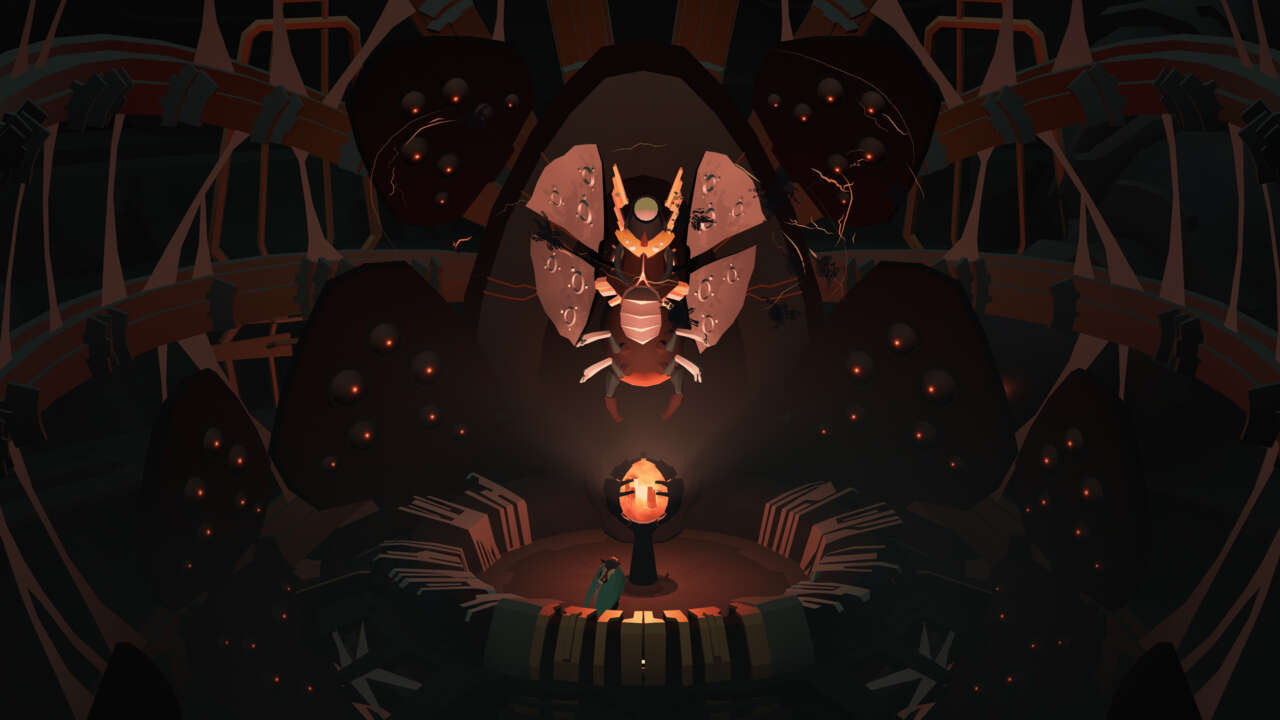Cocoon can be a difficult game to describe without seeing it in action. The delightful puzzle adventure comes from one of the minds behind other puzzle classics, such as Limbo and Inside, which makes its high-level of ingenuity somewhat unsurprising. Despite that, it’s a game that delicately layers its difficulty and naturally leads you to solutions, never being too explicit about guiding you while also providing just enough of a push in the right direction to make each solution feel earned and rewarding. The core conceit of Cocoon lies in its use of various orbs, each of which contains a unique world, that you can enter and exit at will. When inside, you’re tasked with exploring a completely new area with its own set of themed puzzles. However, upon exiting a world, you can carry its respective orb you were just exploring on your back, and use its inherent ability to navigate the larger world outside. It’s a simple gameplay loop to wrap your head around when you’re juggling two distinct worlds, but becomes far more complex when that number gets gradually increased over time.
Each of Coccon’s world’s has its own theme, but also its own ability that you unlock after beat its respective boss. The first orange-tinged world, for example, features puzzles centered around invisible platforms that can only be traversed when observed with a particular power. Soon after beating the world’s boss, this power transfers outside of the world it previously existed in, letting you now traverse previously invisible pathways while carrying this particular world around on your back. Later on, another world grants you the ability to alter the state of water-based columns around you, transforming them from opaque blocks into liquid, traversable ones that can propel you vertically to new areas.
It’s with this power that the thin line between what exists in one world and what exists in all others starts to blur. You begin noticing that toggling this state within the world can alter the state of the columns both inside and outside it, challenging you to utilize it correctly in one world in order to affect the overworld outside. It’s around this time too that Cocoon starts introducing concepts of recursion, where you can enter ethereal areas in the overworld that loop back into the sphere you might be carrying on your back, essentially letting you duplicate them to solve particular puzzles.
All of these small lightbulb moments are in service of Cocoon’s final third, where it stretches its established rules and asks you to put them all together. At this point you’re in control of numerous different spheres that you have to routinely juggle between to progress through the overworld. Up until then they have been doing so distinctly from one another, but upon obtaining the game’s final ability, you quickly see how easy it is to collapse the shared logic between them all to solve a problem. It starts with a switch that is activated by shooting it in the overworld, which activates a platform but needs to be reactivated later on without a second shot.
It takes some time, but you’ll soon come to realize that a single shot can be propagated upwards through a combination of spheres, letting you fire it off at the deepest level in a particular direction to take advantage of reflective surfaces that appear in higher levels as the projectile uses portals to traverse upwards. This realization is spellbinding, not only because it seems too wildly improbable to work at first, but also because of how well it adheres to your assumed logic as it plays out. The way time is dilated according to the depth of the sphere you’re currently in immediately unlocks the knowledge that this solution can be used for more time-sensitive puzzles, which naturally become commonplace shortly after this occurrence.
It’s not so much that Cocoon surprises with this pivot late in the game, but rather that this potential is teased so thoughtfully throughout that it doesn’t rob the moment of its splendor. There’s always this hint that each of these worlds have more to do with one another than initially suggested, especially when you come across areas early on that seem to serve an immediate purpose to your current goal. Returning to these places and finally learning over their importance wraps each small world around and brings them full circle, giving each nook and cranny a sense of importance that makes each of your observations previously feel purposeful and rewarding. How Cocoon continually makes use of this combination of spheres is even more complicated to layout plainly and best experienced personally, but suffice to say each one had me exclaiming at my television in awe, shocked that Cocoon had the depth to make what seemed like a ridiculously complex solutions possible within its tightly designed parameters.
There’s an art to making a player feel like a genius while simultaneously avoiding the pitfall of puzzles that are far too complex to be satisfying, but Cocoon is one of the rare instances where finding this balance seems effortless. It’s a stunningly confident puzzle game with a unique loop that continually offers up new ways to expand its ruleset, but also never overstaying its welcome. There have certainly been much larger, more cinematic moments in gaming in 2023, but it will be difficult for me to forget the quaint joy of solving a puzzle in Cocoon.
